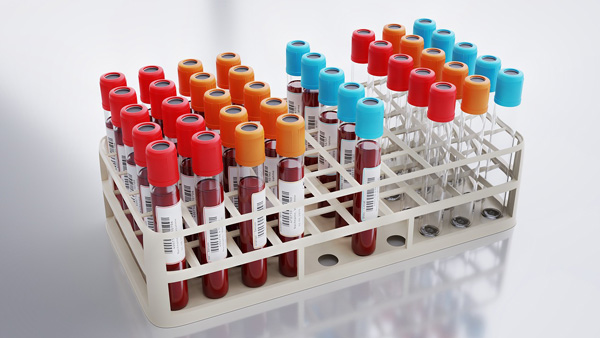French scientists identify new blood type, “Gwada Negative”

[Blood samples. Photo Credit to Pixabay]
In June 2025, researchers at the French Blood Establishment (EFS) led by Thierry Peyrard unveiled the discovery of a new human blood group system, a breakthrough that began with a puzzling case identified more than a decade earlier in Paris, France.
The journey to this discovery began in 2011, when laboratory staff in France found that a woman from Guadeloupe produced unusual antibody reactions during routine pre-surgical testing. Her blood did not match any of the known blood group systems, leaving her incompatible with nearly all donor blood.
That mysterious antibody prompted years of intermittent investigation until advances in high-throughput DNA sequencing allowed researchers to revisit the case and probe the patient’s genome in more detail.
Genetic analysis revealed a mutation inherited from both mother and father that leads to the absence of a specific, high-frequency antigen on the patient’s red blood cells.
Researchers named the phenotype “Gwada negative” — a nod to the patient’s Guadeloupean origin (“Gwada” is a local shorthand for Guadeloupe) — and the scientific designation has been registered as the 48th human blood group system.
To date, the woman remains the only confirmed individual worldwide with this phenotype, meaning she would be biologically compatible only with her own blood unless matching donors are identified.
Although at first glance, this may seem like a rare curiosity, the finding carries significant clinical benefits.
First, formally identifying the antigen and its genetic basis gives clinicians and blood banks a concrete target for screening and for searching rare-donor registries, reducing the risk of potentially life-threatening transfusion reactions.
Second, the discovery underscores the power of genomic tools to resolve long-standing immunohematological mysteries — enabling earlier identification of other carriers in diverse populations and improving transfusion safety on a population scale.
Finally, naming and registering the system with ISBT ensures international awareness and coordination, which are vital for locating compatible blood in emergencies.
Practically, the most pressing application lies in transfusion medicine: blood banks can now add the new antigen to panels used when patients show unexplained antibodies, and rare-donor registries can be alerted to actively seek other carriers, especially within populations related to the patient’s geographic background.
If additional carriers are identified, their blood can be frozen and banked at ultra-low temperatures so it can be available for transfusion when needed.
Beyond transfusions, genetic knowledge of the antigen has implications for obstetric care (where maternal antibodies can affect pregnancies) and guide research into whether the antigen has any broader physiological or disease-related significance.
The discovery of the Gwada negative case is a vivid reminder that human blood group diversity is far richer than the commonly known ABO and Rh systems.
Each new discovery tightens the safety net around patients with rare immunohematological profiles and exemplifies how modern sequencing and international collaboration can combine to translate a single puzzling lab result into a tool that can save lives.
As researchers continue to search for additional carriers, blood services worldwide will be better prepared to identify, store, and — if necessary — deliver compatible blood to those who need it most.

- Seungmin Shin / Grade 11
- North London Collegiate School Jeju

![THE HERALD STUDENT REPORTERS [US]](/assets/images/logo_student_us.png)
![THE HERALD STUDENT REPORTERS [Canada]](/assets/images/logo_student_ca.png)
